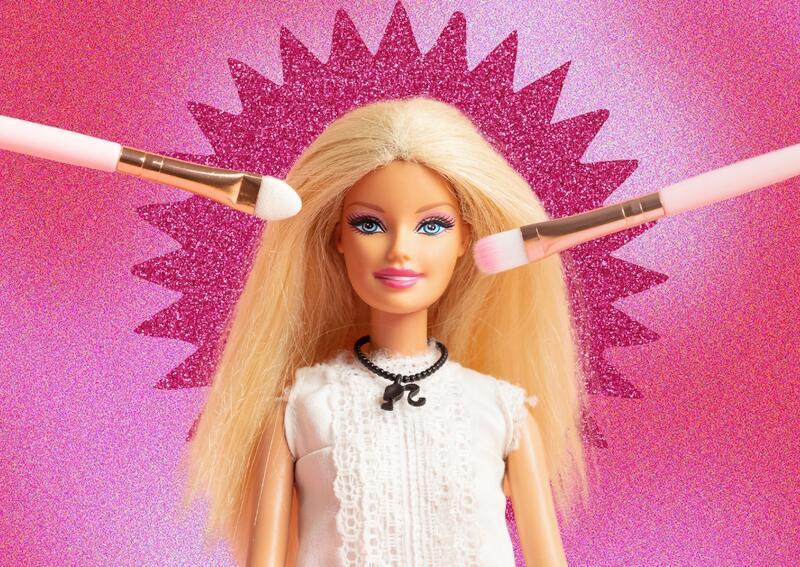The Real-World Impacts of Barbie Dolls
I regret begging my mom to buy me my first Barbie doll. Not because I didn't like it. In fact, I liked it too much. I became obsessed with comparing myself to her as the beauty standard. I was not obsessed with the joy she brought me, but the pain she inflicted on me. Despite her being a doll, I believed she was the beauty standard; she was what I needed to look like to make it in this world, or to find my Ken. On top of that, my childhood memories are clouded with statements my family friends would make to kickstart conversion, “OMG, did you know you look just like Barbie?” Yes, I had blonde hair and blue eyes, but that was about all we had and common, and that was evident to me after spending all my time wishing my body matched hers. Being compared to Barbie was a “compliment” that young Elah always replied to with a smile and nod, despite knowing that I was too big with cellulite and stretch marks for this blanket statement to reign true.
I loved Barbie’s appearance and couldn't help but play dress up with her or reunite her with her boyfriend, Ken. But as I did this, I fell victim to Barbie's message—that she was the beauty standard.
Barbie is a brand owned by the Mattel corporation, a brand worth $700 million. Many of these millions were made capitalizing off women’s insecurities. When someone mentions Barbie, the first thing that comes to mind always seems to be the cursive pink lettering, the perfect blonde high ponytail, and her catastrophic thigh gap.
But the most influential aspect of Barbie historically has been her body. A critique of Barbie from South Shore Eating Disorders Collaborative (SSEDC) noted that Slumber Party Barbie comes packed with a scale permanently set to 110 lbs. The calculated height for Barbie—5 '9”—and weight of 110 pounds fits the diagnostic criteria for anorexia and is more than 20 pounds below the minimum healthy body weight for her height. This is a children’s toy, marketed for ages 2-12, and this is what children grow up believing is “normal.”
In the National Library of Medicine’s 2010 experiment testing the correlation between dolls and body image, groups of girls were randomly assigned to play with a thin doll, an average-sized doll, or Legos. After ten minutes, each participated in a taste test and a body-image based survey. It was evident that the girls who played with the thinner doll ate less. This experiment is yet another example of the effects of Barbie’s body type on the minds of young girls. This research demonstrates that many girls shared my struggle in comparing themselves to Barbie's body and feeling insecure.
In addition to Barbie causing girls to have body insecurity, Barbie has also had a problem with racial diversity. For years, the only Barbie dolls on the shelves were white. In 1967, the first Black doll released was named “colored Francie.” It wasn't until 1980 that Mattel created a Latina Barbie Doll and not until 1981 for an Asian Barbie doll. Even now, the current board of Mattel is 67% White, 12% Hispanic and 10% Black or African American. These numbers are shocking. As Mattel makes more diverse Barbie dolls, its board should reflect real-world diversity.
Within this progression, the Barbie message made a 180 on July 31 with the production of the newest Barbie movie. Though Barbie drained my self-esteem as a girl, that all changed when I saw the Barbie movie this summer. It was unlike anything I expected. Despite decades of Barbie when Barbie was only known as a skinny white doll, the movie featured a diverse range of Barbies including a transgender Barbie, plus-sized Barbies, and Barbies of diverse racial backgrounds. The movie calls out the patriarchal society we live in by putting its characters in a powerful matriarchal society. Watching this movie and seeing the brand's amazing execution of a change in media presence is pushing me to buy Barbies again. While it is important to call out this inequality that has held true throughout the brand’s history, it is equally as important to look at the present. So, I implore you peek at your closest Target’s Barbie section and get a taste of the new brand—a brand that has room for everyone, because now Barbie looks like everyone, and everyone can look like Barbie.
This piece was written as part of JWA’s Rising Voices Fellowship.







